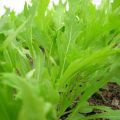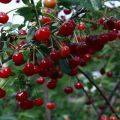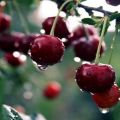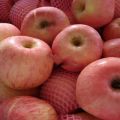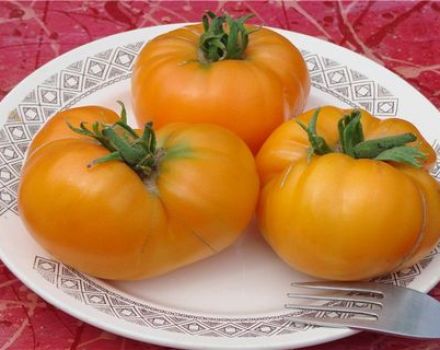Description of Japanese finely sawed cherry sakura and characteristics of varieties, cultivation and care
Sakura cherry has its own special purpose. At home, this wild fruit tree is a symbol of the country, and there is even a cherry blossom festival. China is no less sensitive to the plant. In Russia, Japanese cherry is not so popular, but many gardeners dream of having such a luxury in their garden or personal plot. As it turned out, the tree can be grown in most regions and enjoy pleasant aromas and charming flowers in the spring.
The difference between Japanese cherry and other varieties
The Japanese cherry is an ornamental crop, so you shouldn't plant it if you need fruiting fruit trees. It blooms luxuriously and is a real decoration of the site, and after that cherries appear on it, but they are too small and not suitable for eating.
Sakura is a tree, its height varies from 8 to 15 m, the length of the shoots is about a meter. During the flowering period, it is covered with flowers in white and pink shades.
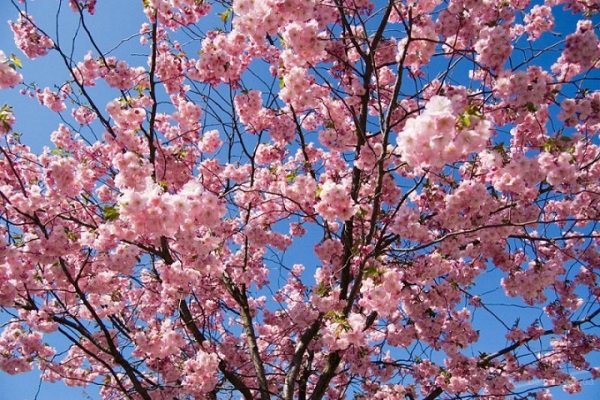
Varieties
Under the name sakura, there are half a dozen species and several hundred subspecies of Japanese cherry. But most often on the plots there are two varieties of trees - Kiku Shidare and Kanzan. They are not inferior in beauty to other representatives of the species, but at the same time they are more resistant to temperature extremes, pests and do not require complex care.

Kiku Shidare
Small-sawn cherry of this variety is suitable for growing in the forest-steppe zone, where the temperate continental climate. The height of the tree is 3.5-4 meters.
Kiku Shidare has a spreading crown prone to thickening. It is covered with elliptical leaves with jagged edges.
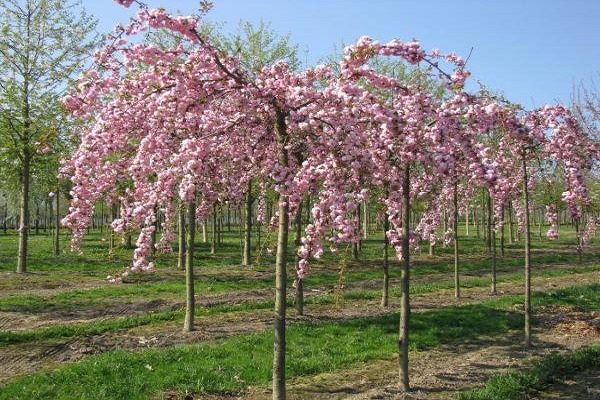
The grade of this decorative cherry especially appreciated for its early prolonged flowering period. Already in late March - early April, it turns into a white-pink cloud due to large, densely double flowers.
Kiku Shidare is a self-fertile variety, and even if you plant one tree, with proper care, it will actively bloom and bear fruit.
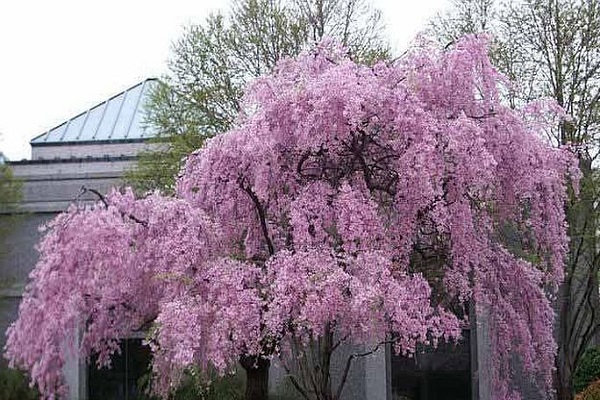
Kanzan
Another type of tree-like garden sakura, which is lower than other decorative analogues. It has a reverse-conical crown that looks exotic and creative, which is why it is often chosen to decorate the adjoining territories.
The tree grows at an average speed, the leaves are elongated, oval, in autumn they acquire a fiery yellow color. Kanzan's flowers are massive, fragrant, pink. They form long hanging inflorescences of 3-6 pieces.
Cherry Kanzan - a light-loving culture, grows best in neutral and strongly alkaline soils.
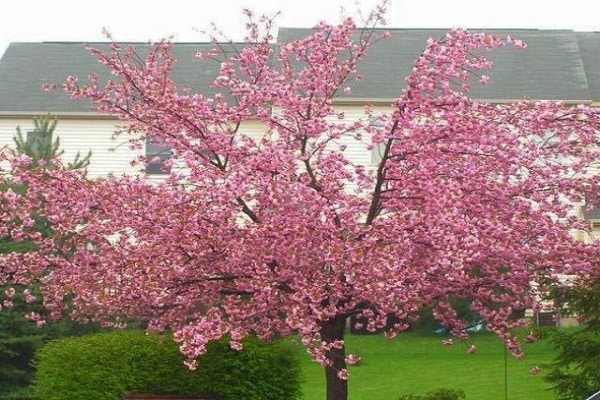
Growing features
Garden sakura is often planted with seeds, which are well prepared - washed and dried. It is better to plant in summer, but both spring and autumn planting is possible.
If you want to buy a seedling, then you need to choose a strong, healthy plant. It can be transferred to the ground in April, placing the trees at a distance of 2-3 meters from each other.

The landing site requirements are as follows:
- if possible, it is better to choose a site on the slopes;
- it should be moderately lit; in strong light, the plant can get sunburn;
- the acidity of the soil is neutral, loamy soil is considered the best option.
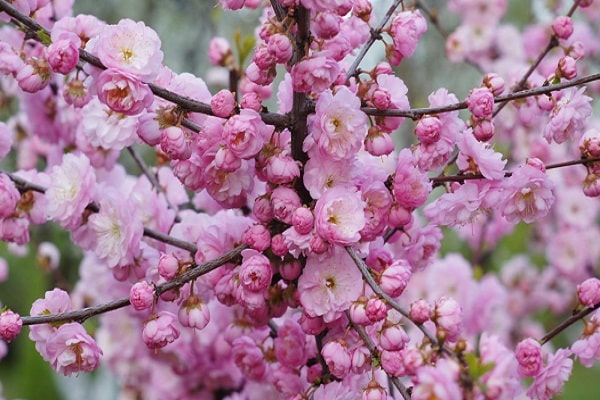
Care
It is not difficult to take care of sakura, of course, special attention should be paid to a young, fragile tree. You need to take care of the following:
- Watering - water as needed, but the tree especially needs moisture when the buds swell and in the first 2 weeks of active flowering.
- Top dressing - introduced during watering; humus, compost, mineral fertilizers (nitrogen-potassium) are placed in the trunk circle; you cannot use top dressing for cherries, which strongly acidify the soil.
Japanese cherry does not tolerate wintering well, so it is worth insulating it: add potassium and phosphorus in the fall. Fertilizers should not contain nitrogen - it will not allow the cherry to get rid of the leaves before frost. A week and a half before the expected drop in temperature, the trunk and the grafting site should be wrapped with covering material, and dense agrofiber should be used for skeletal shoots. Films and other non-breathable materials cannot be used.
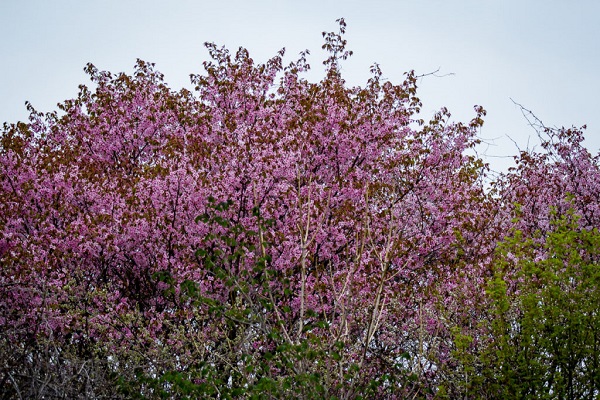
Pruning
It is important not to allow the sakura crown to thicken, otherwise the tree will lose all its decorative effect. It is recommended to prune the shoots in the spring, before the juice goes. Damaged, excess, dried branches are removed, the sections are immediately covered with a layer of garden varnish.
During the procedure, you need to act carefully so that gum flow does not begin - a non-infectious disease gommosis.
Garden sakura - the beauty of the site or the local area, the pride of the owner, causing the admiring glances of others. At the same time, the cherry tree is undemanding - the main thing is to take into account the peculiarities of the oriental guest.




